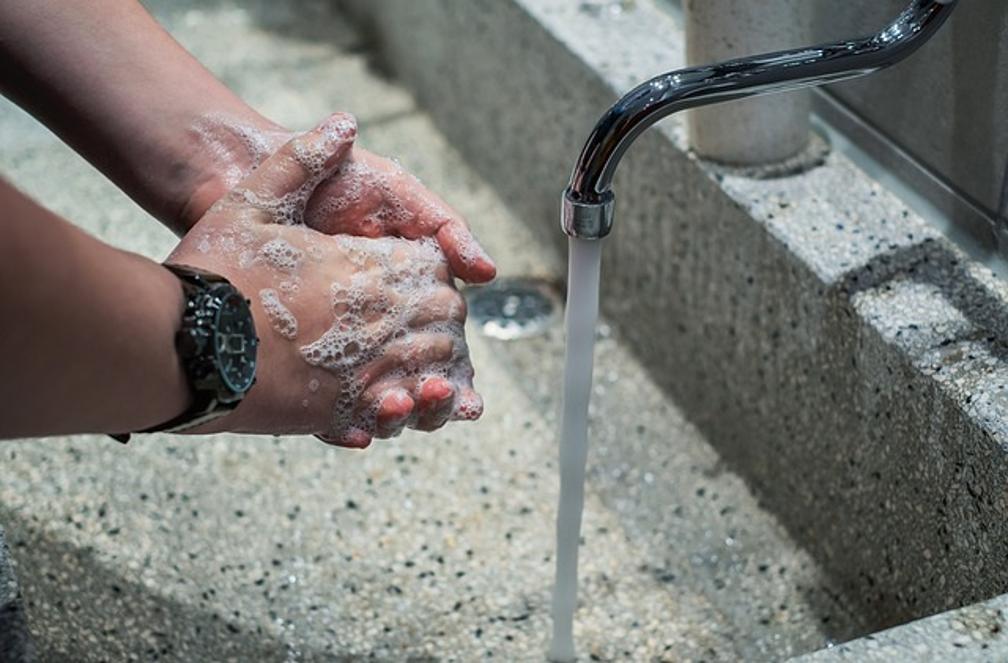How to Clean Your Dehumidifier: Step-by-Step Guide for Optimal Performance
Introduction
Maintaining a clean dehumidifier is crucial for its proper functioning and longevity. A dirty dehumidifier can become less effective, consume more energy, and even become a breeding ground for mold and bacteria. To ensure your dehumidifier works optimally, it’s essential to clean it regularly.
Cleaning might seem daunting, but with the right approach and tools, it’s a straightforward task. This comprehensive guide will walk you through every step, from gathering necessary supplies to reassembling the device. Read on to learn how to keep your dehumidifier in top shape.

Why Cleaning Your Dehumidifier is Essential
A clean dehumidifier performs optimally by efficiently removing moisture from the air. When dirt, dust, and mold accumulate, they can hinder the device’s performance, lead to unpleasant odors, and pose health risks. Here’s why regular cleaning is essential:
- Improved Efficiency: Dirt buildup can clog the components, forcing the dehumidifier to work harder and consume more energy.
- Extended Lifespan: Regular cleaning prevents wear and tear, helping your dehumidifier last longer.
- Health Benefits: A clean device ensures cleaner air, reducing the risk of mold and bacteria-related health issues.
- Better Air Quality: Removing accumulated dust and mold keeps the device running smoothly, improving the overall air quality in your home.
Cleaning your dehumidifier isn’t just about maintaining its appearance; it’s about ensuring it operates safely and efficiently, keeping your indoor air quality at its best.
Gathering Your Supplies
Before starting the cleaning process, having the right supplies on hand is essential. Here are the items you’ll need:
- Soft Cloths: For wiping down surfaces and components.
- Mild Soap or Detergent: To clean the water tank and other removable parts.
- Warm Water: For mixing with soap or detergent.
- Vacuum with Brush Attachment: To remove dust and debris from external parts and grilles.
- Soft-bristle Brush or Toothbrush: For scrubbing hard-to-reach areas.
- Compressed Air Canister: To blow out any dust from tight spots.
- Gloves: To protect your hands while cleaning, especially when handling mold or harsh cleaners.
Once all supplies are gathered, you are ready to begin the cleaning process.
Preparing the Dehumidifier
Preparation is key to making sure the cleaning process goes smoothly. Follow these steps to prepare your dehumidifier:
- Turn Off and Unplug: Ensure the dehumidifier is turned off and unplugged from the power source to prevent any electrical hazards.
- Empty the Water Tank: Remove and empty the water tank. Dispose of any collected water properly.
- Remove Removable Parts: Take out filters, water tanks, and any other detachable components. This makes cleaning easier and more thorough.
Preparing your dehumidifier ensures safety and sets the stage for an effective cleaning process. With the unit properly prepared, you can now focus on thoroughly cleaning each component.

Cleaning the Water Tank
The water tank is one of the most critical components to clean since it’s where moisture is collected. Follow these steps to clean it effectively:
- Soak in Warm Soapy Water: Fill the tank with warm water and a few drops of mild detergent. Let it soak for a few minutes to loosen any deposits or dirt.
- Scrub Thoroughly: Use a soft cloth or sponge to scrub the inside of the tank, paying special attention to the corners and edges where mold and mildew might accumulate.
- Rinse Completely: Empty the soapy water and rinse the tank thoroughly with clean water. Make sure no soapy residue remains, as it could cause foaming during operation.
- Dry the Tank: Using a clean cloth, dry the tank completely before re-installing it. Leaving it wet might promote mold growth.
By keeping the water tank clean, you prevent mold buildup and ensure the dehumidifier functions without any foul odors.
Cleaning the Filters
Filters play a crucial role in maintaining the air quality and efficiency of your dehumidifier. Here’s how to clean them:
- Remove the Filters: Take out the filters from the dehumidifier as per the manufacturer’s instructions.
- Vacuum the Filters: Use a vacuum with a brush attachment to remove loose dust and debris from the filters.
- Soak and Scrub: If the filters are washable, soak them in warm soapy water and gently scrub them with a soft-bristle brush to remove stubborn dirt.
- Rinse and Dry: Rinse the filters under running water until they’re free of soap. Allow them to air dry completely before re-installing them.
Clean filters help maintain the dehumidifier’s efficiency and ensure that the air in your home remains free from dust and allergens.
Cleaning the Coils and Grilles
Over time, dust and dirt can accumulate on the coils and grilles, reducing the dehumidifier’s efficiency. Here’s how to clean these components:
- Access the Coils: Refer to your dehumidifier’s manual to locate and access the coils and grilles.
- Vacuum the Surface: Use a vacuum cleaner with a brush attachment to gently clean the surface of the coils and grilles, removing any accumulated dust.
- Use Compressed Air: For hard-to-reach areas, use a compressed air canister to blow away dust and debris.
- Wipe Down: With a soft cloth, wipe down any exposed surfaces to ensure they are clean.
Clean coils and grilles allow your dehumidifier to operate more efficiently, ensuring it removes moisture effectively while consuming less energy.

Reassembling the Dehumidifier
Once all components are thoroughly cleaned, it’s time to reassemble your dehumidifier. Follow these steps:
- Reinsert the Filters: Make sure the filters are completely dry before reinstalling them in their designated slots.
- Replace the Water Tank: Secure the cleaned and dried water tank back into the dehumidifier.
- Reattach Removable Parts: If you removed any additional components, reattach them as per the manufacturer’s instructions.
- Plug In and Test: Once fully reassembled, plug the dehumidifier back in and turn it on to ensure everything is working correctly.
Reassembling your dehumidifier carefully ensures that all components are in place and that the device functions optimally.
Maintenance Tips for a Clean Dehumidifier
Regular maintenance can keep your dehumidifier running smoothly for longer periods. Here are some tips:
- Regular Cleaning: Clean the water tank and filters every two weeks to prevent mold buildup and ensure efficient operation.
- Check for Mold: Inspect for mold regularly and clean it immediately to avoid health risks.
- Monitor Performance: Pay attention to how your dehumidifier performs. If efficiency drops, it might be time for a thorough cleaning.
- Store Properly: When not in use, store your dehumidifier in a dry, cool place to prevent dust accumulation and mold growth.
By following these maintenance tips, you can extend your dehumidifier’s lifespan and ensure it runs efficiently.
Conclusion
Regularly cleaning your dehumidifier is crucial for its performance and longevity. From cleaning the water tank to filters and coils, each step ensures that your device remains effective and safe to use. With this guide, you now have all the information you need to keep your dehumidifier in top condition. Remember, a clean dehumidifier means better air quality and a healthier home.
Frequently Asked Questions
How often should I clean my dehumidifier?
Clean your dehumidifier at least once a month. However, if you use it frequently or in a high-humidity environment, consider cleaning it every two weeks to prevent mold and dust buildup.
Can I use regular household cleaners for my dehumidifier?
It’s best to use mild soap or detergents without harsh chemicals to clean the components of your dehumidifier. Harsh chemicals might damage the parts or leave residues that can affect performance.
What should I do if there’s mold inside my dehumidifier?
If you find mold inside your dehumidifier, clean it immediately using a mixture of water and mild detergent. For stubborn mold, you can use a solution of white vinegar and water. Ensure the unit is thoroughly dried to prevent future mold growth. If the problem persists, consider seeking professional cleaning services.
